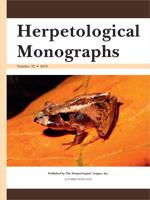The American Alligator (Alligator mississippiensis) is a crocodilian species that was once listed as endangered in the United States but is now harvested both recreationally and commercially throughout its range in the southeastern United States. Harvest of alligators typically includes egg collecting and hunting. However, review of scientific literature reveals that the effects of harvest on alligator populations have received little scientific scrutiny. We built a theoretical simulation model to evaluate the impact of several harvest strategies on long-term (i.e., 100 yr) alligator population trends. We used system dynamics software to develop the model and acquired data for the model from literature and field studies on alligator ecology. Although widely applicable across the species range and for other crocodilians, we used the Texas alligator management program as an example for model use. Results of model simulations showed that current harvest (50% egg harvest, 2% subadult harvest, 2% adult harvest) is sustainable, but alligator populations will stabilize at levels below population potential. The best harvest scenario for a sustainable harvest that maintains alligator populations at a relatively unchanging level is a 38% egg harvest, 2% subadult harvest, and 2% adult harvest. An elevated egg harvest (80%) can be sustained if no hunting harvest occurs. Contrarily, an increased hunting harvest (4% subadult, 4% adult) can be sustained with no egg harvest. This model identifies the function of current alligator harvest within populations and provides a tool for future use in determining the effect of changes in harvest or life-history characteristics on alligator population dynamics.
How to translate text using browser tools
25 September 2018
A Theoretical Population and Harvest Model for American Alligators (Alligator mississippiensis)
Cord B. Eversole,
Scott E. Henke,
Benjamin L. Turner,
Selma N. Glasscock,
Randy L. Powell,
David B. Wester,
Bart M. Ballard
ACCESS THE FULL ARTICLE

Herpetological Monographs
Vol. 32 • No. 1
December 2018
Vol. 32 • No. 1
December 2018
Harvest management
population ecology
Quantitative modeling
Systems dynamics
Vensim




